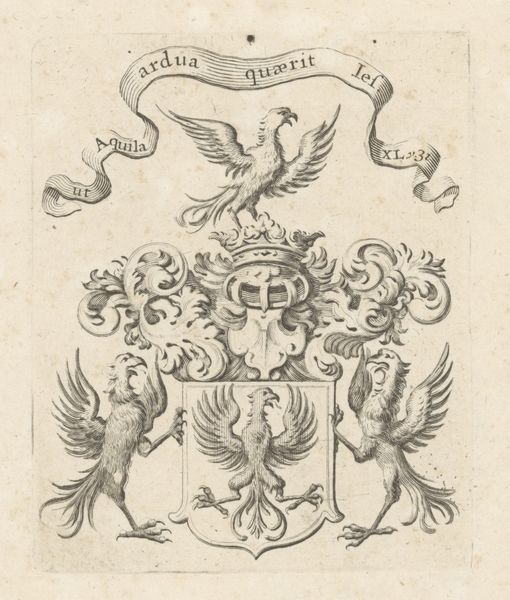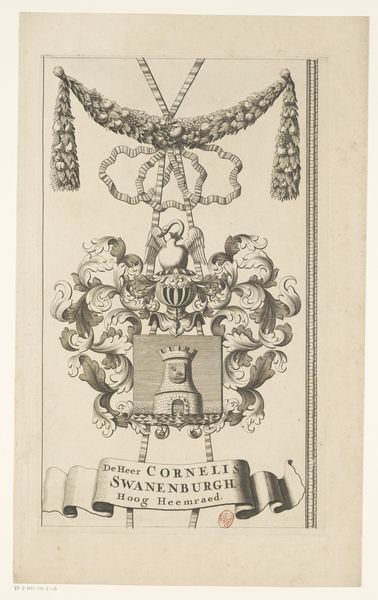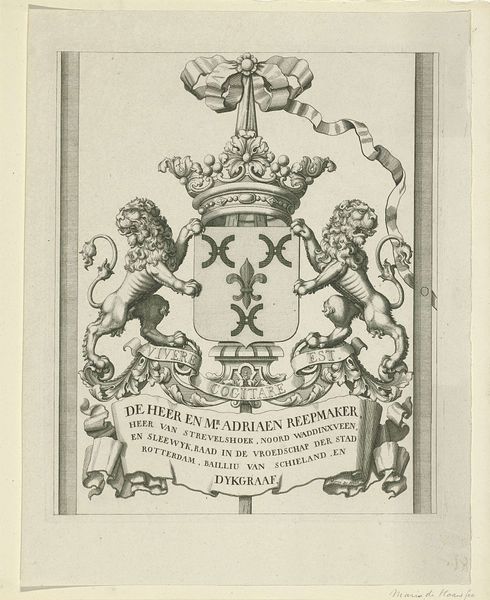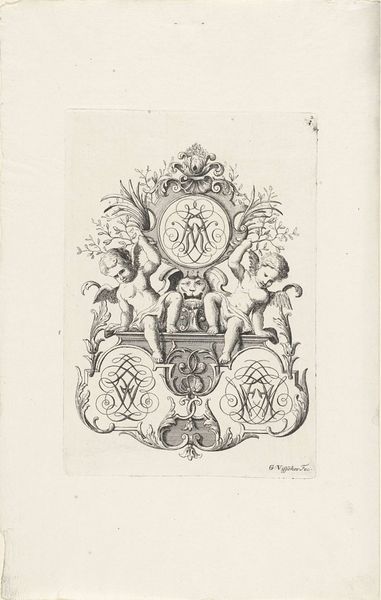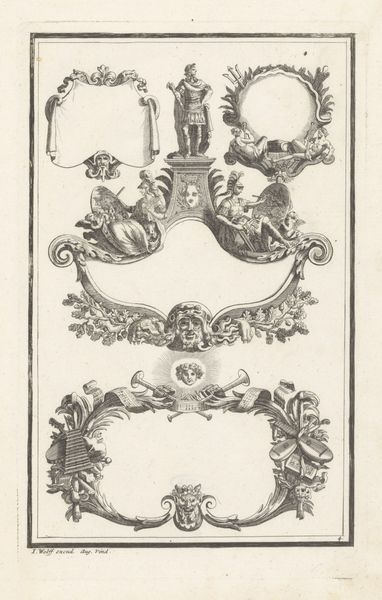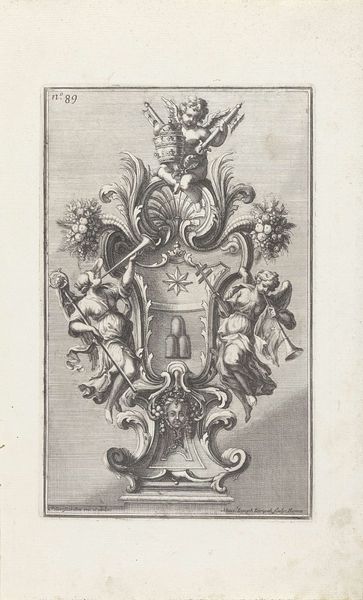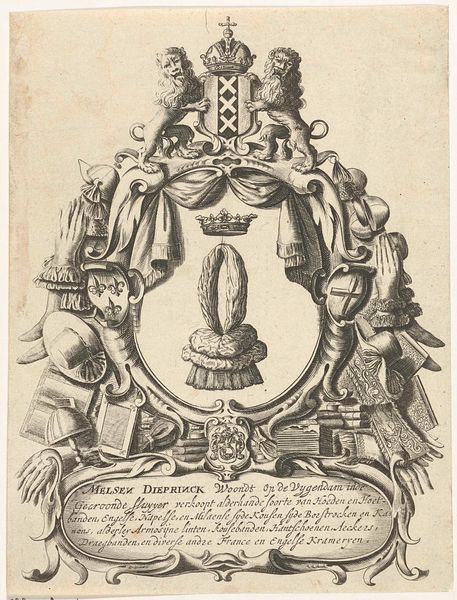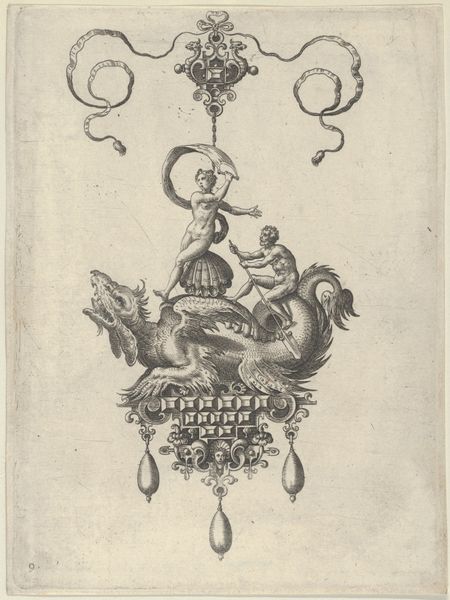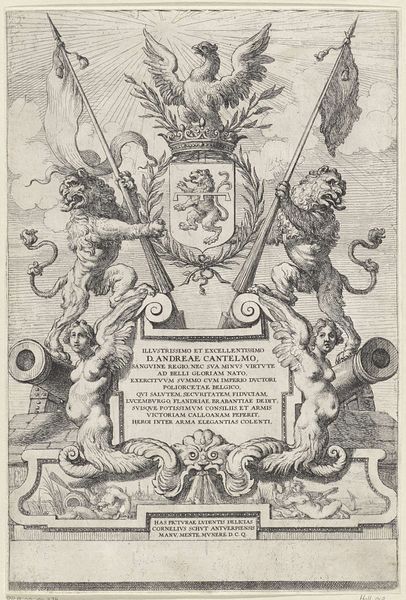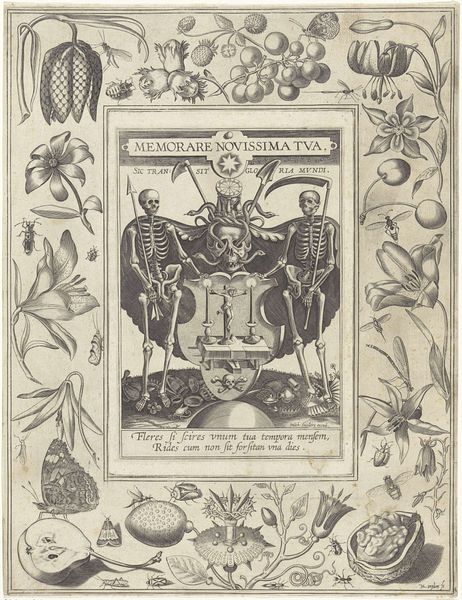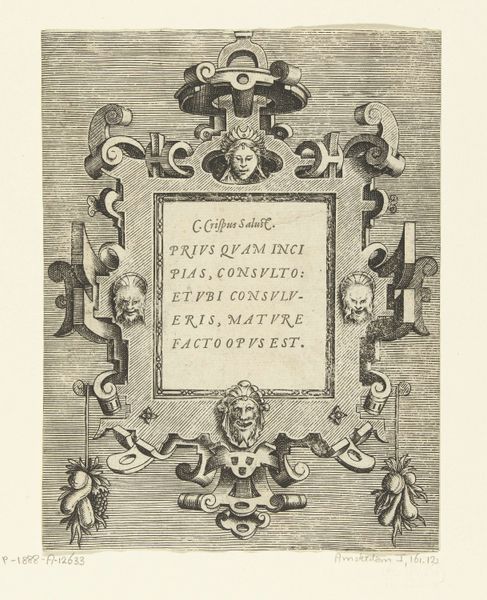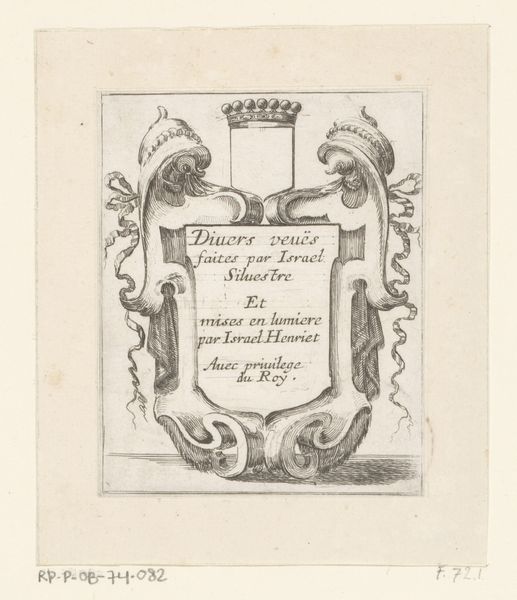
Wapenschild van Johann Joseph Anton graaf van Thun en Hohenstein 1732
0:00
0:00
drawing, print, engraving
#
drawing
#
baroque
#
pen drawing
#
mechanical pen drawing
# print
#
pen illustration
#
old engraving style
#
pen-ink sketch
#
line
#
pen work
#
engraving
Dimensions: height 94 mm, width 68 mm
Copyright: Rijks Museum: Open Domain
Editor: Here we have "Wapenschild van Johann Joseph Anton graaf van Thun en Hohenstein," a Baroque engraving created by Bernard Picart in 1732. The fine lines create a rather imposing effect, despite the print’s actual size. What do you see in this piece beyond just a coat of arms? Curator: This isn't just a coat of arms, it's a carefully constructed visual narrative. Coats of arms act as cultural anchors. Look at the unicorn. It wasn't simply a decorative choice. What does the unicorn tell us about the individual represented? Editor: Well, unicorns often symbolize purity, grace, and maybe even royalty. Was Count Thun trying to project those qualities? Curator: Precisely! And notice how it stands, poised and rearing. Each element of heraldry functions as a piece of a larger story, designed to be read by those initiated in its visual language. How might these symbols have shaped how others viewed the Thun family? Editor: I guess it's like creating a brand, centuries before advertising. The symbols work on both a conscious and subconscious level. It's not just about history; it's about how the past is actively constructed and presented. I'd never thought about heraldry like that. Curator: Indeed. And think of the implications - not only for families, but for nations as well, seeking to embed their claims of power and place in the visual consciousness of their citizens and rivals alike. It’s all symbolism designed to persist. Editor: So much intention and layered meaning! It’s like a memory palace rendered in miniature.
Comments
No comments
Be the first to comment and join the conversation on the ultimate creative platform.
